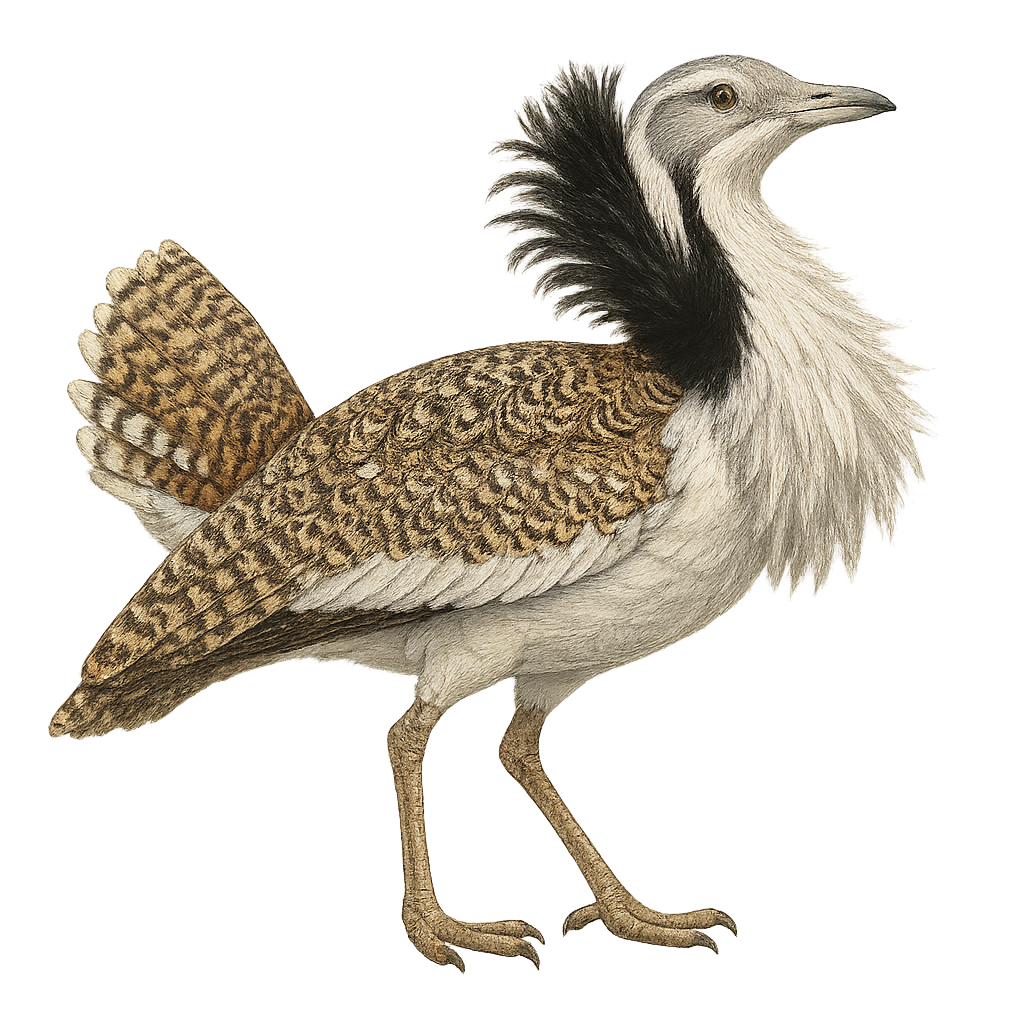Your wildlife photography guide.
Explore the houbara bustard in detail, study its behavior, prepare your shots.
Where to observe and photograph the houbara bustard in the wild
Learn where and when to spot the houbara bustard in the wild, how to identify the species based on distinctive features, and what natural environments it inhabits. The WildlifePhotographer app offers tailored photography tips that reflect the houbara bustard’s behavior, helping you capture better wildlife images. Explore the full species profile for key information including description, habitat, active periods, and approach techniques.
Houbara bustard
Scientific name: Chlamydotis undulata

IUCN Status: Vulnerable
Family: OTIDIDAE
Group: Birds
Sensitivity to human approach: Shy
Minimum approach distance: 50 m
Courtship display: December to March
Incubation: 22-24 jours
Hatchings: December to April
Habitat:
Deserts, steppes, semi-deserts
Activity period :
Primarily active during the day, with peak activity in the morning and late afternoon.
Identification and description:
The Houbara bustard, Chlamydotis undulata, is a medium-sized bird known for its sandy-brown plumage, which provides excellent camouflage in desert landscapes. It features a distinctive crest of black and white feathers on its head and neck. This primarily terrestrial bird prefers running to flying when escaping predators. Its diet consists mainly of plants, insects, and small reptiles. The Houbara bustard is famous for its spectacular courtship displays, where the male fans out his feathers to attract a mate. It inhabits the arid and semi-arid regions of North Africa, the Middle East, and Central Asia. Unfortunately, this species is threatened by excessive hunting and habitat loss.
Recommended lens:
400 mm – adjust based on distance, desired framing (portrait or habitat), and approach conditions.
Photography tips:
To photograph the Houbara bustard, it is advisable to use a telephoto lens of at least 400 mm to capture detailed images without disturbing the bird. Since this bird is shy and prefers open habitats, it's crucial to maintain a safe distance of about 50 m. The best times to observe and photograph the Houbara bustard are early in the morning or late in the afternoon, when the light is soft and the bird is more active. Use a tripod to stabilize your camera and be patient to get quality shots.
The WildlifePhotographer App is coming soon!
Be the first to explore the best nature spots, track rutting seasons, log your observations, and observe more wildlife.
Already 1 439 wildlife lovers subscribed worldwide

